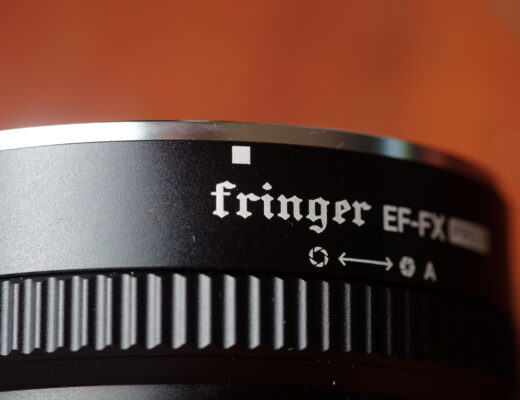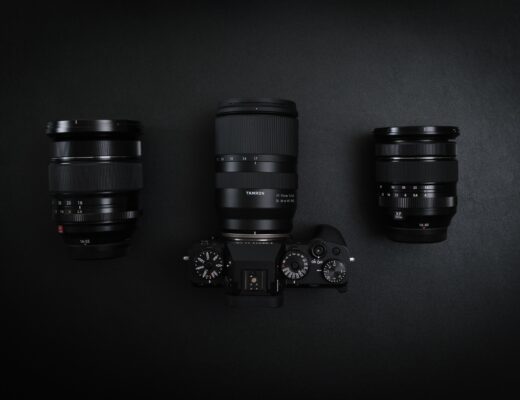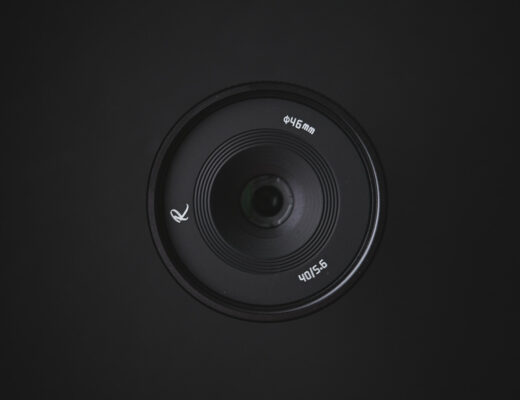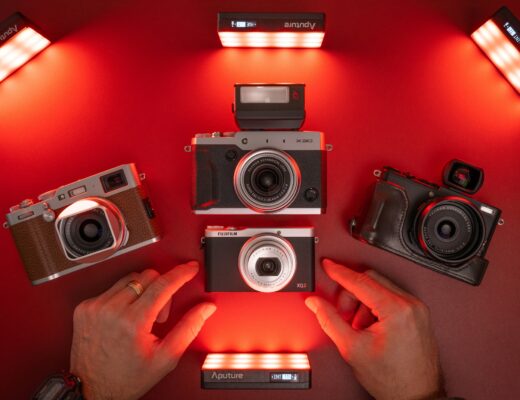It was time for a Walkabout, definition by Crocodile Dundee: “A spontaneous journey through the wilderness of one’s choosing in an effort to satisfy one’s itchy feet, a need to be elsewhere, the craving for the open road, that space over the horizon…yes… something like that… you can’t quite touch it so you have to go find it because it’s you just know it’s there…Or maybe it just feels good to go walking around … (wink): Yeah. It’s WALKABOUT.” Source: Urban Dictionary.
At this time in my life, with health issues and having recently turned 73, I needed a walkabout.
A friend of mine who lives in Texas was renting a home for September in scenic Ft. Bragg, California. He also enjoys photography, so he invited me up for a few days to visit and take photos. September weather in California can be spectacular for photography: clear golden hours, bright, sunny days, and the occasional tropical air mass that brings big, puffy white clouds and amazing sunsets and sunrises.
Two short days of travel later from my home north of Santa Barbara, California, I was in Ft. Bragg with my full Fuji kit: two amazing X-T2 bodies, tripod, monopod, flash, three extra batteries, extra SD cards, 55-140 f/2.8, and 16-55 f/2.8, and, of course, the 10-24mm f/4 R OIS. I took about 400 images, mostly with my new 10-24. I have used it a couple of times during my contract photojournalist work for local newspapers, but I wanted to really put it to a “test” along the rugged and beautiful northern California coast. I wanted to see how the 10-24 performed under a wide variety of lighting, subject matter and color. The Ft. Bragg area was the perfect place. I also wanted to just enjoy taking photos for myself. Not for display prints, not for sale, not for the paper, just for me (and for my family and friends whom I force to look at my images). Kidding.
This article concentrates on my experience shooting with the 10-24 f/4 R OIS. I purposely shot very wide on most shots to see how much distortion there would be (duh) and how much I was able to correct it. All shots were handheld or braced on a nearby object. I shot exclusively in Velvia/VIVID, but experimented with a lot of the shots on the Skunk Train adventure with Dynamic Ranges of 100, 200 and 400 percent. Color balance was almost always set on sunlight. I was having too much fun on the train ride to take good notes as to which image was shot in which dynamic range. Sorry.
The rest of the article can be found in the description of the images, placed pretty much in chronological order over the five days of shooting. I discuss a lot of the detail of taking the photos, including EXIF, lighting conditions, and challenges faced. It’s kind of like having to sit through a photographer’s slide show, listening to him or her drone on… only here, you can skip ahead.

This shot had a lot of elements to it. I had to scramble down and up various boulders at Glass Beach because we arrived a little late to get properly set up for sunset shots. There is a large tide pool in the foreground that had a smooth surface. 1/125th, f/13, ISO 200, 24mm.

Lots of colors here and I love the clouds. This photo is a very tight crop from a much wider jpg shot. I used noise reduction, sharpening, and increased detail adjustments. 1/125, f/14, ISO 400, 24mm.
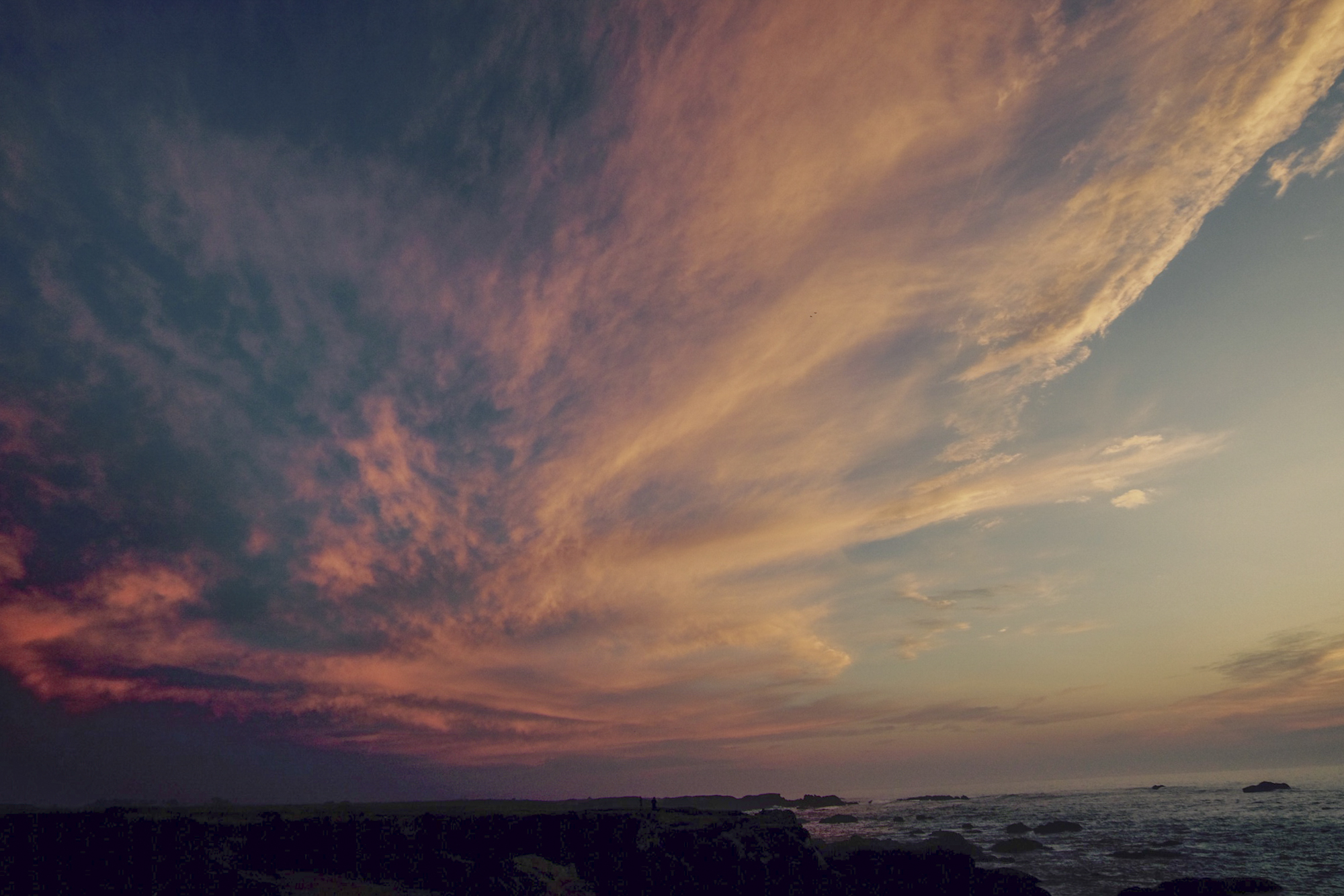
Luv, luv this shot. After the sun set I looked to the south and saw the reflection of the remaining golden rays of the sun on the clouds overhead. 1/125, f/8, ISO 400, 10mm. I used a Sigma’s 10-24 in LR’s lens correction field.

I shot directly into the sun for this image. Except for the lens flares and and light streaks on the museum, I really like the image with its colors and the sky. In Lightroom used a Canon EFS 10-20mm lens correction, which pretty much straightened the horizon curves behind the museum, plus some other LR adjustments. 1/125, f/22, 11mm, ISO 400.
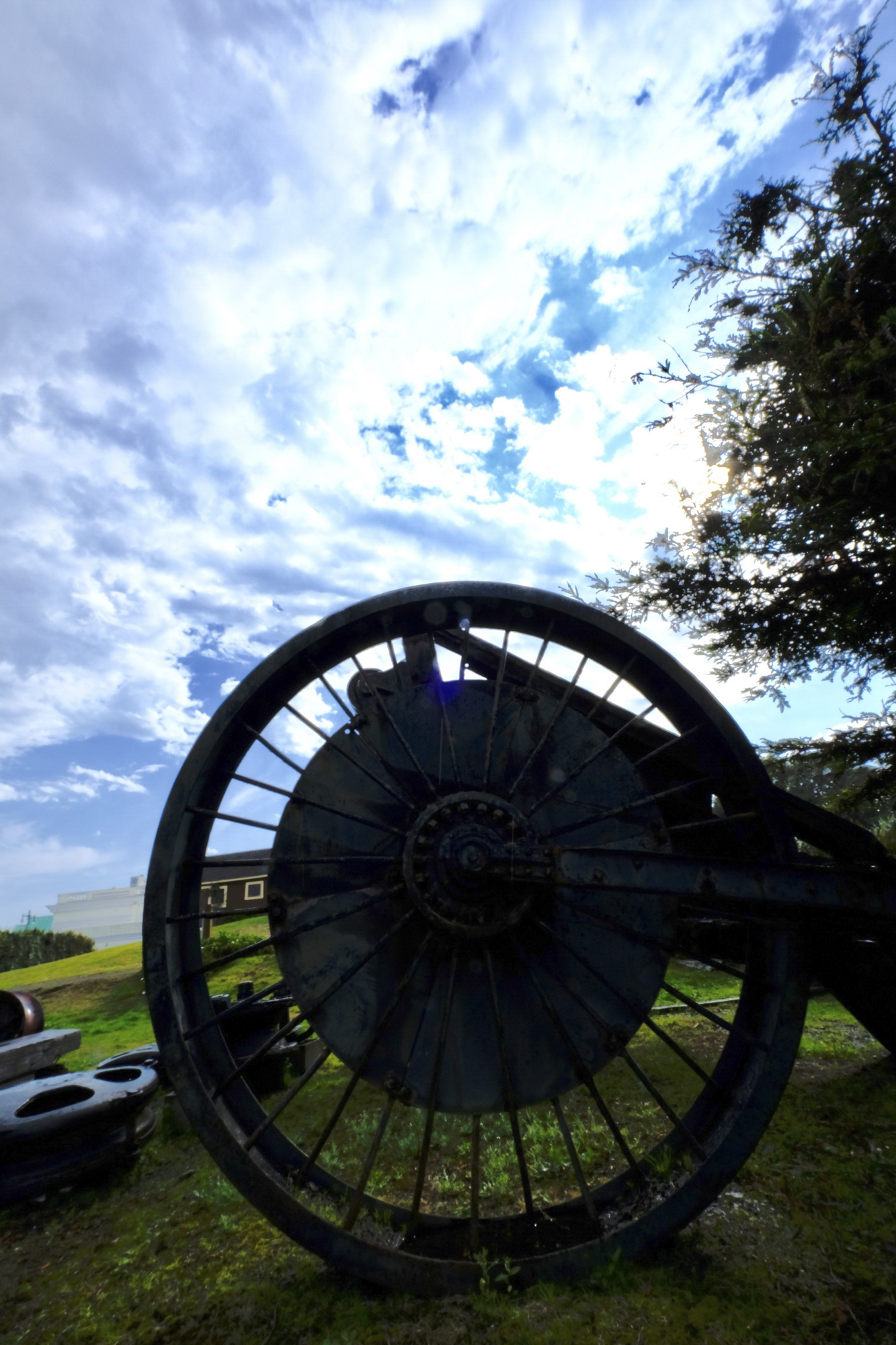
First of two images: shooting into the sun on a mostly cloudy morning the wheel is almost completely dark. As an experiment, I wanted to decrease the white in the clouds and raise the detail on the wheel. See next image.
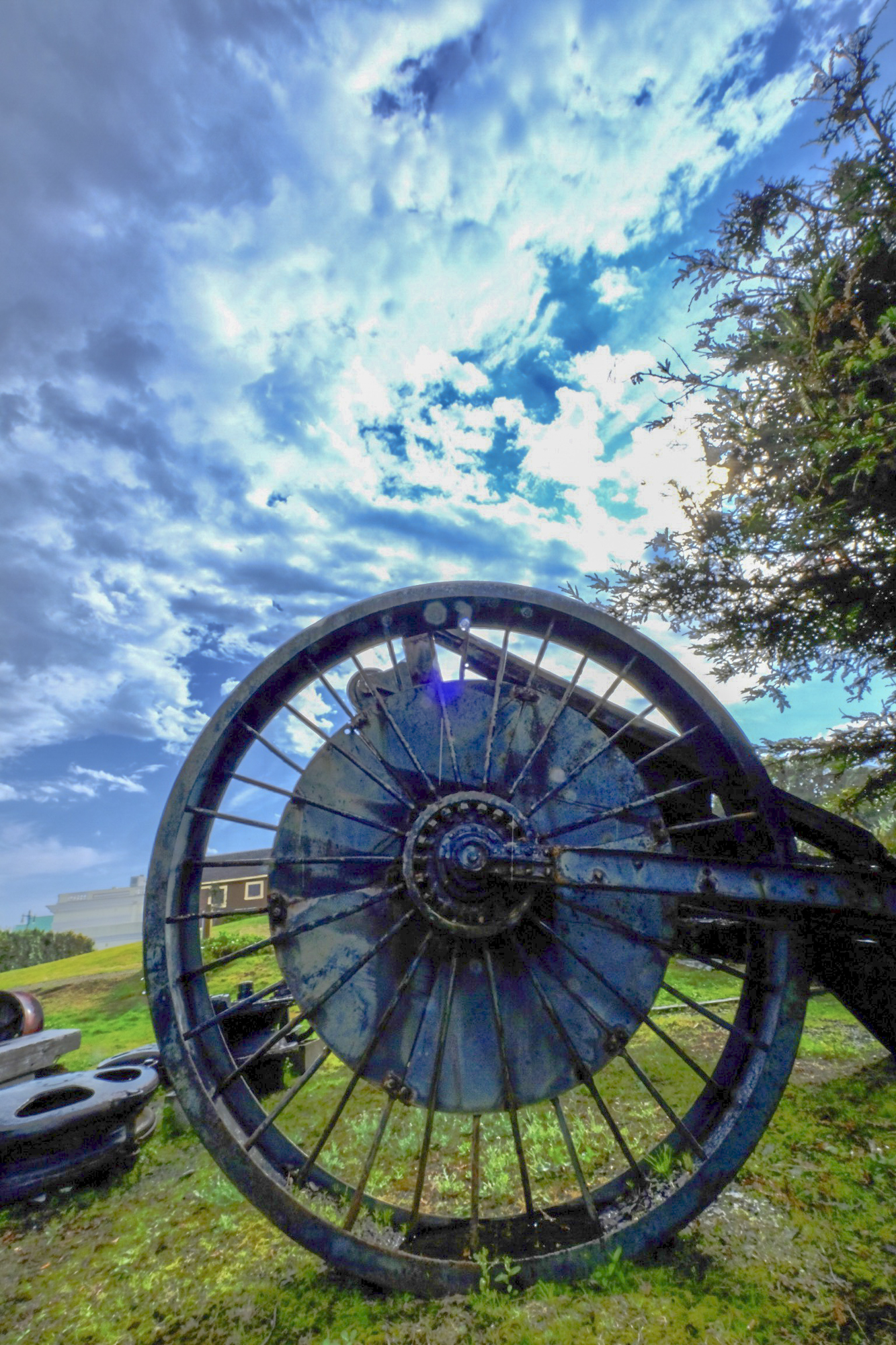
The second of two images: shooting into the sun on a mostly cloudy morning the wheel was almost completely dark in the first photo. I decreased the white and highlights settings for the clouds and raise the detail on the wheel increasing shadows control to +85, plus increasing the exposure a bit. Even in jpg fine Fuji-San amazes. 1/125, f/22, ISO 400, 10mm.
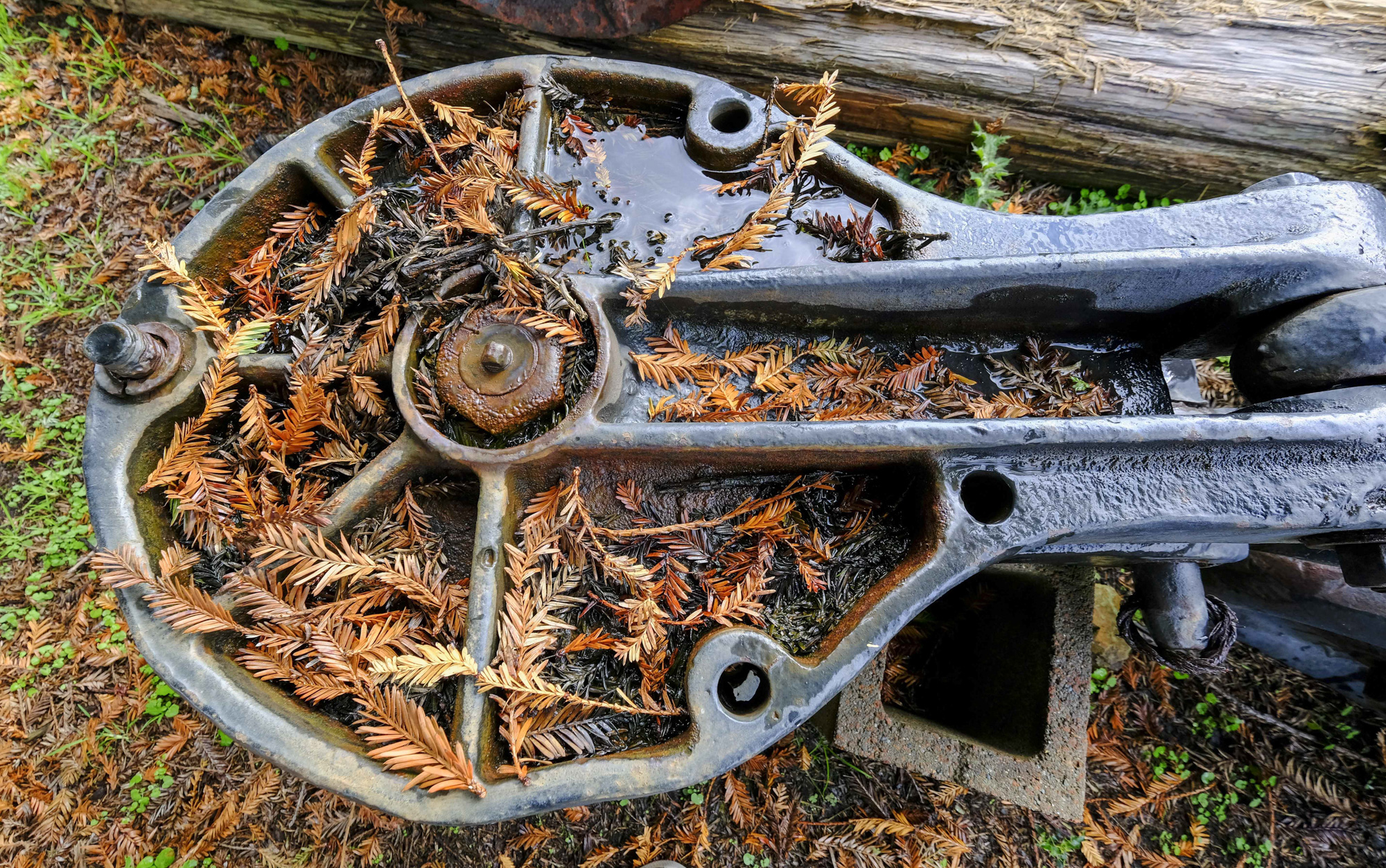
This is a part of a huge lumber mining machine on display near the Skunk Train depot in downtown Ft. Bragg. It was about a foot and a half wide at the widest and a little over two feet long. I love the detail the X-T2 and the 10-24 lens provide. 1/125, f/5.6, ISO 400, 10mm. A little touch up in LR, including the Sigma 12-24mm distortion correction.
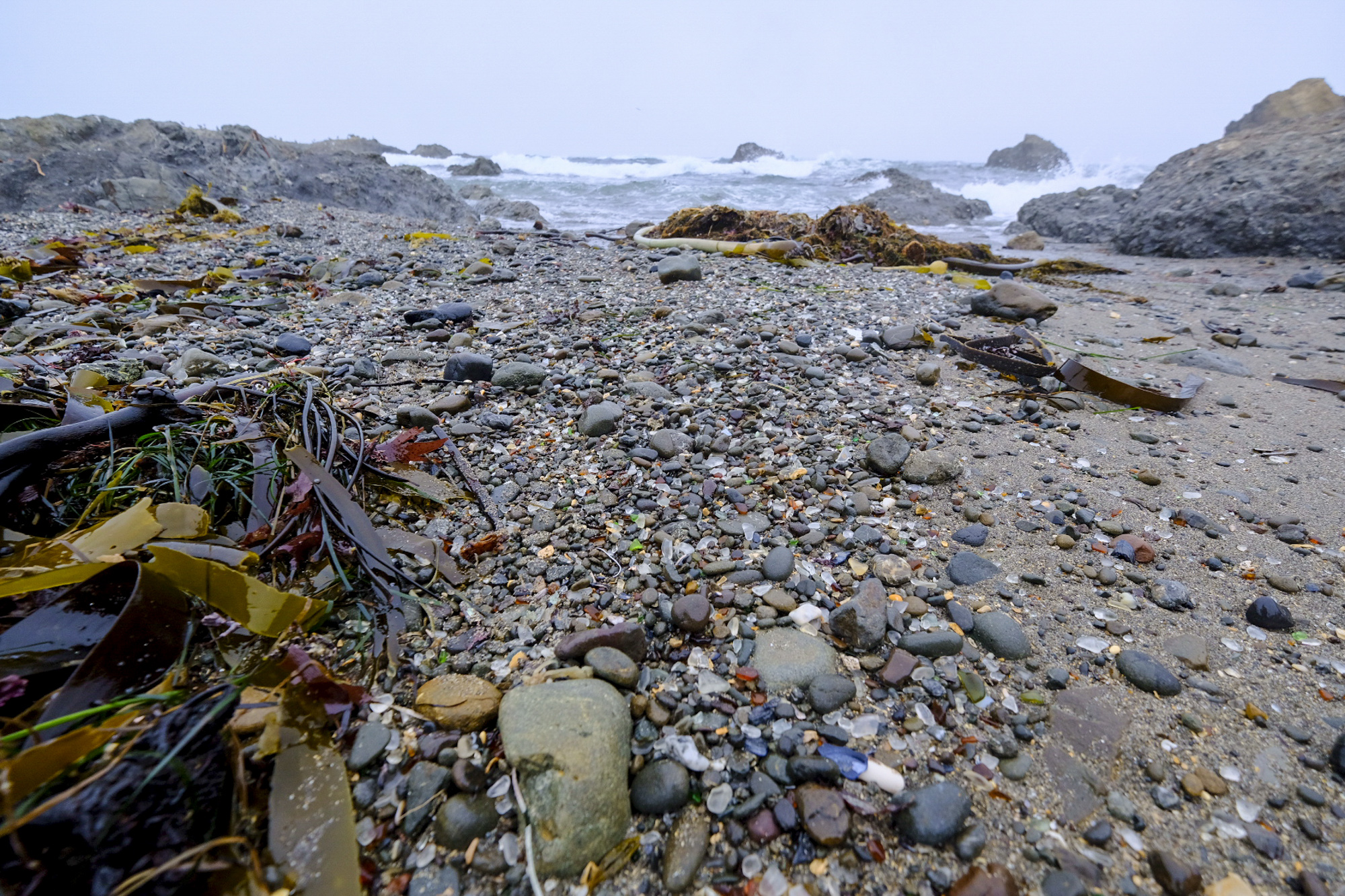
Since our first visit to Glass Beach at Ft. Bragg ended up being a sunset shoot, we went back a couple of days later looking for…..well, glass. Three beaches were the site of a city dump many years ago. The ocean ground many items to glass. There still is some glass left, but visitors have taken so many for souvenirs it’s tough to find any. Anyhow, I liked this image taken a couple of inches off the beach because of all the elements: seaweed, rocks, big rocks, the ocean breaking over the rocks….Note the distortion at the upper right and both lower edges. Again, this can be adjusted or cropped. 1/250, f/5, ISO 800, 10mm.
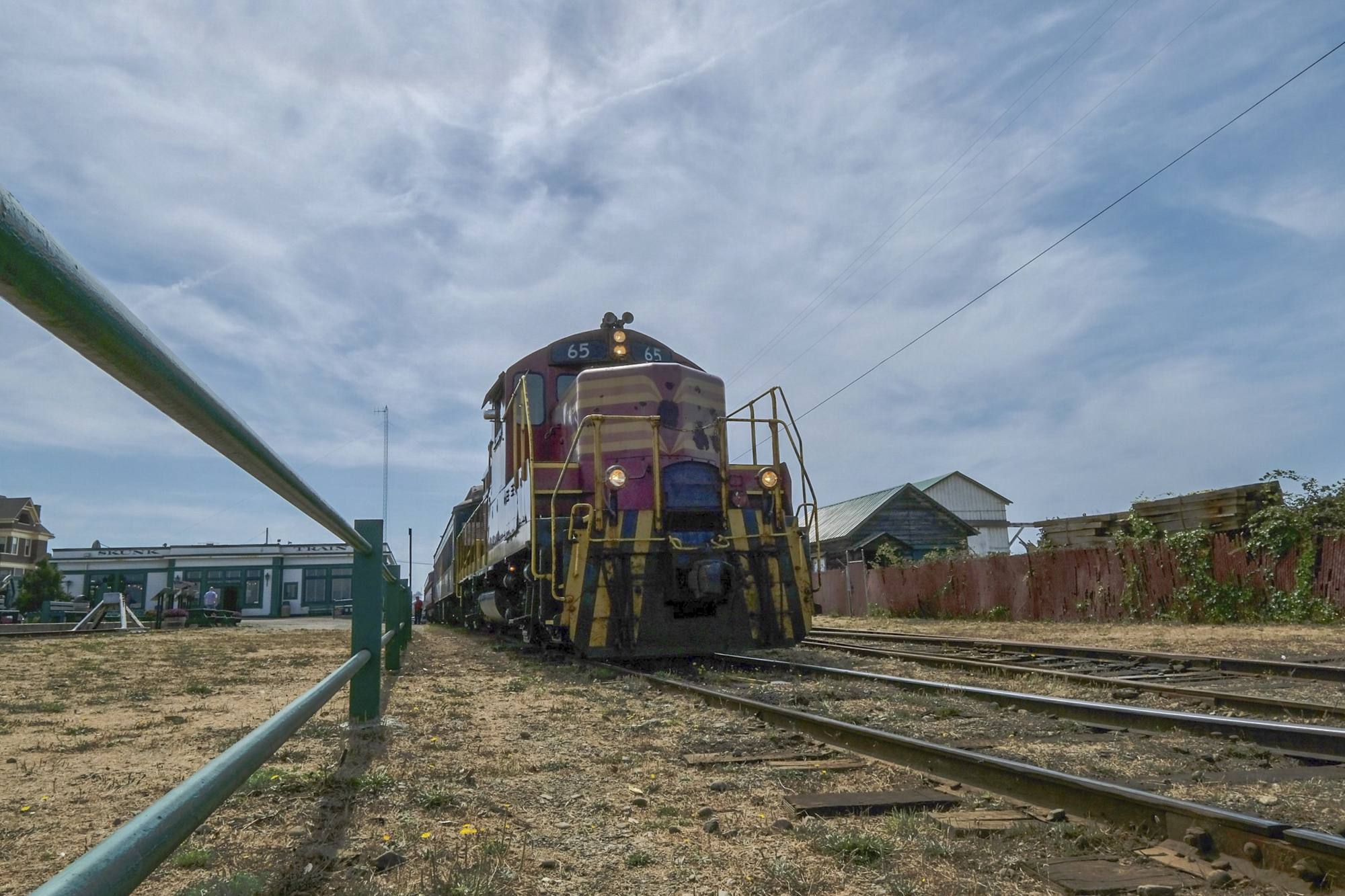
The Skunk Train’s engine. Disappointed it wasn’t a steam engine. I wanted to let the lines of the railing, the power line and the tracks lead to the engine. Very little distortion from the 13.8mm shot. 1/250th, f/22, ISO 250.
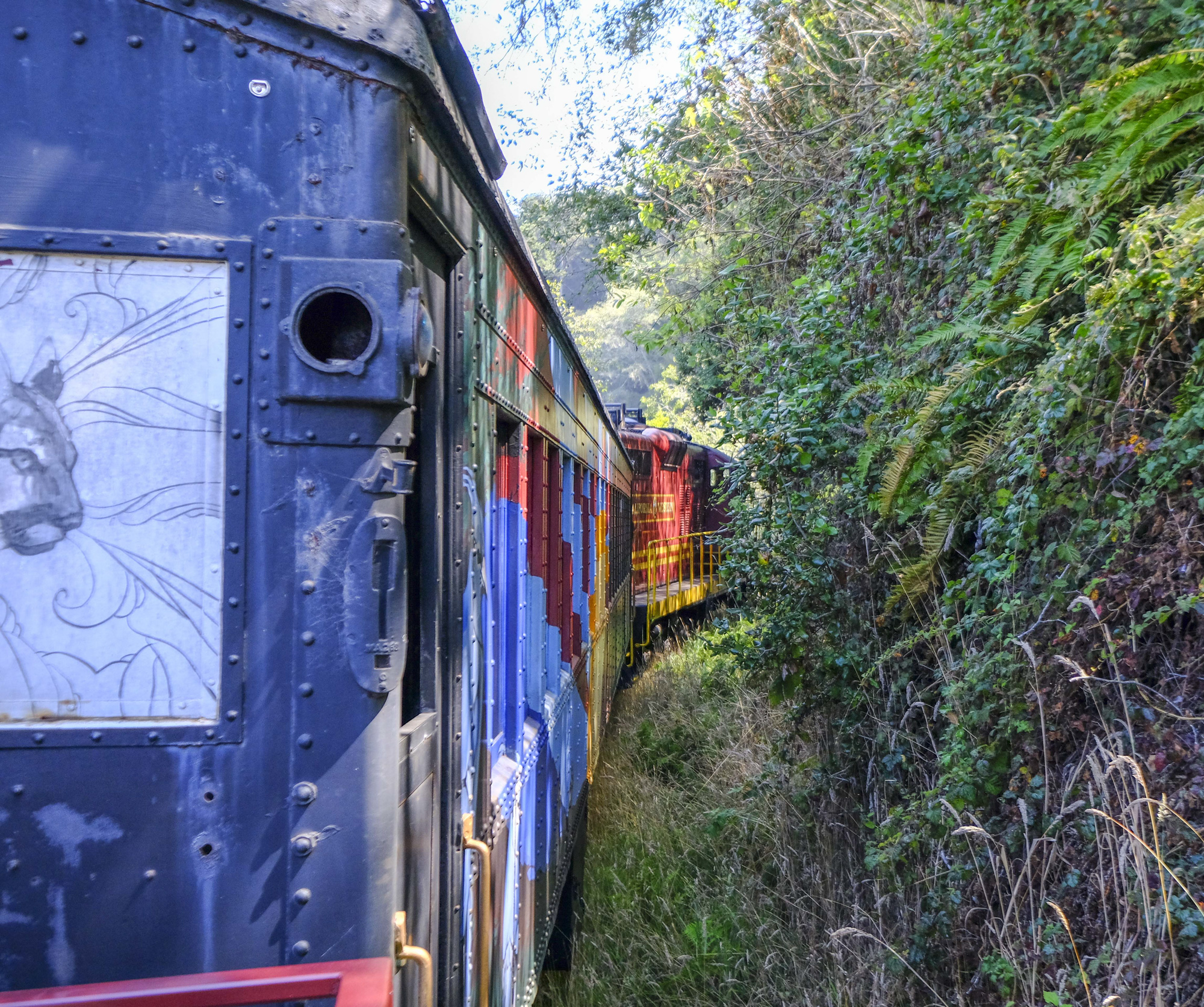
The Skunk Train makes its way through the trees northeast of Ft. Bragg. I liked this image because the sunlight fell on the engine at just the right time, there are light and dark blue, red, green, and other colors. The focus almost made it to the engine, despite the f-stop being at f/4. I believe I shot this at 200% dynamic range. I also like the great detail. 1/500, f/4, ISO 1000, 24mm.
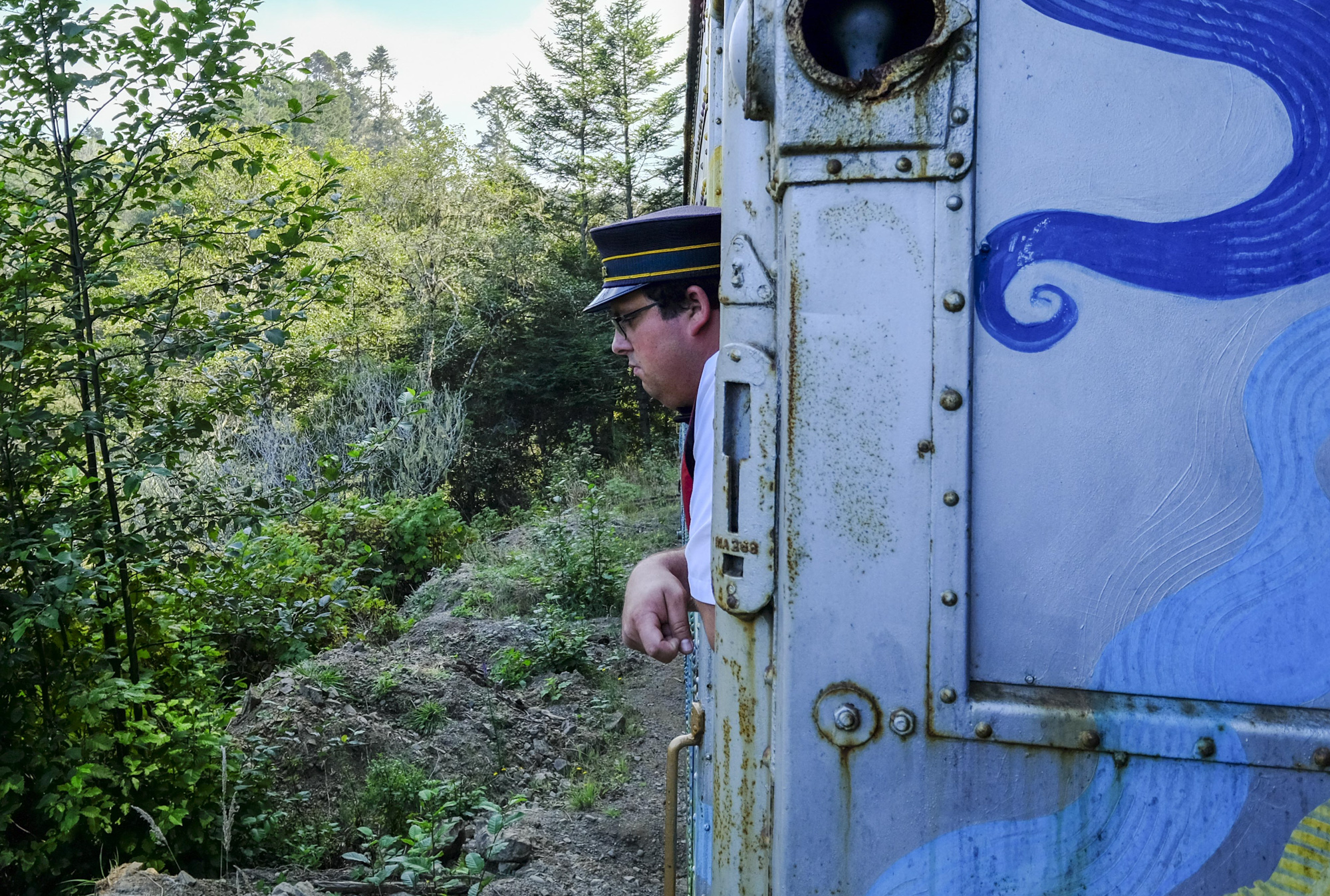
Skunk Train conductor Tyler watches the scenery go by for possibly the 600th time. Remember I am looking at all aspects of the 10-24 under a variety of shooting conditions. He is in the shade. I love the way Fuji-San brings up the detail. Shadows brought up in LR. 1/500, f/4.5, ISO 400, 24mm.
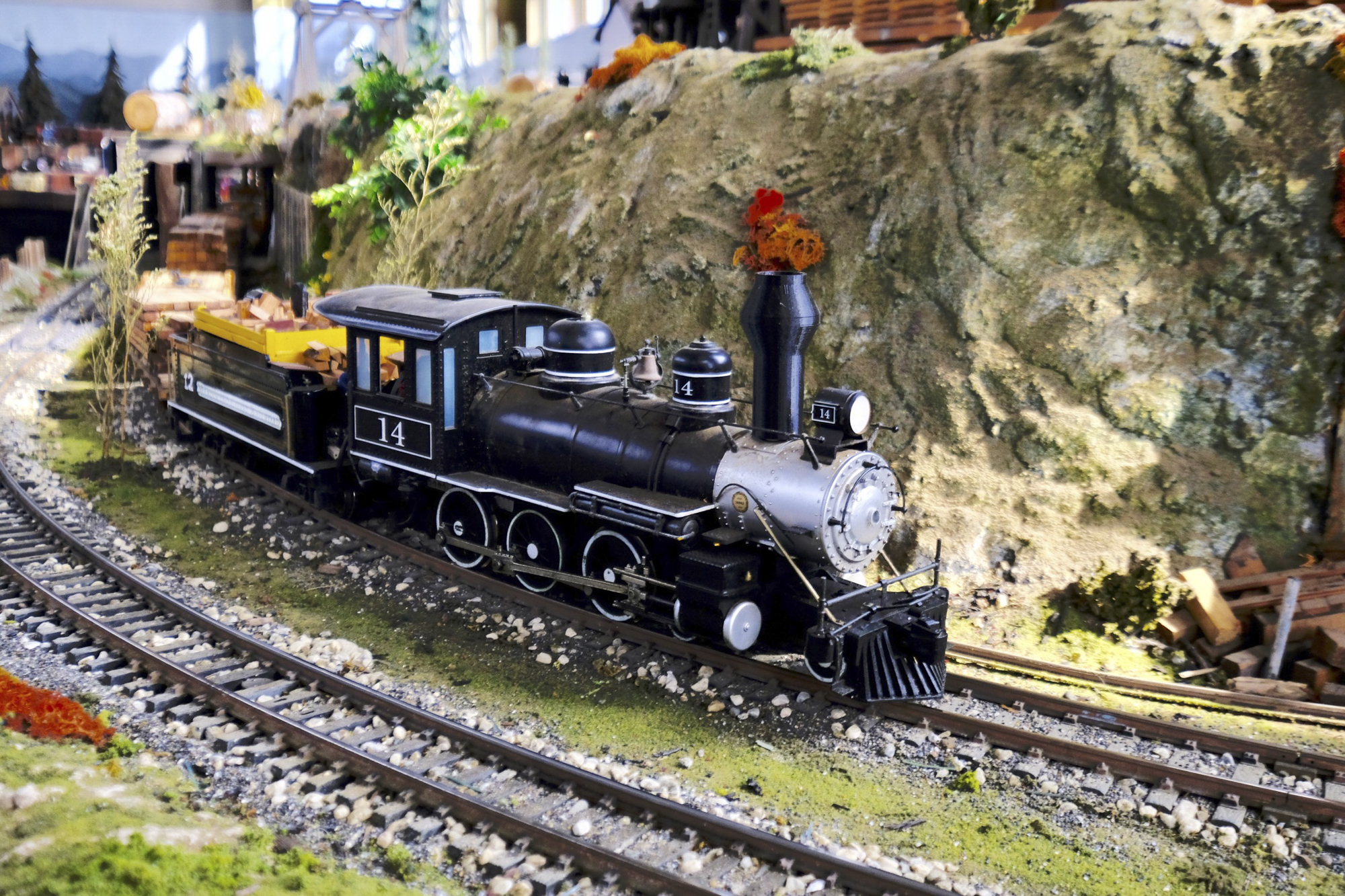
This image is unedited. It was taken at the dark railroad museum at the Skunk Train depot. The train was moving at a fair clip. 1/500, f/4, ISO 800, 24mm. Love my Fuji-san.

I believe this is an unedited shot (except for leveling the horizon) at MacKerricher State Park. I liked the shades of blue, the handrails that lead to the beach, the humans, and the rocks. I love the richness of color. This is cropped so there is minimal distortion of the handrails.. 1/100, f/22, ISO 250, 12.6mm.
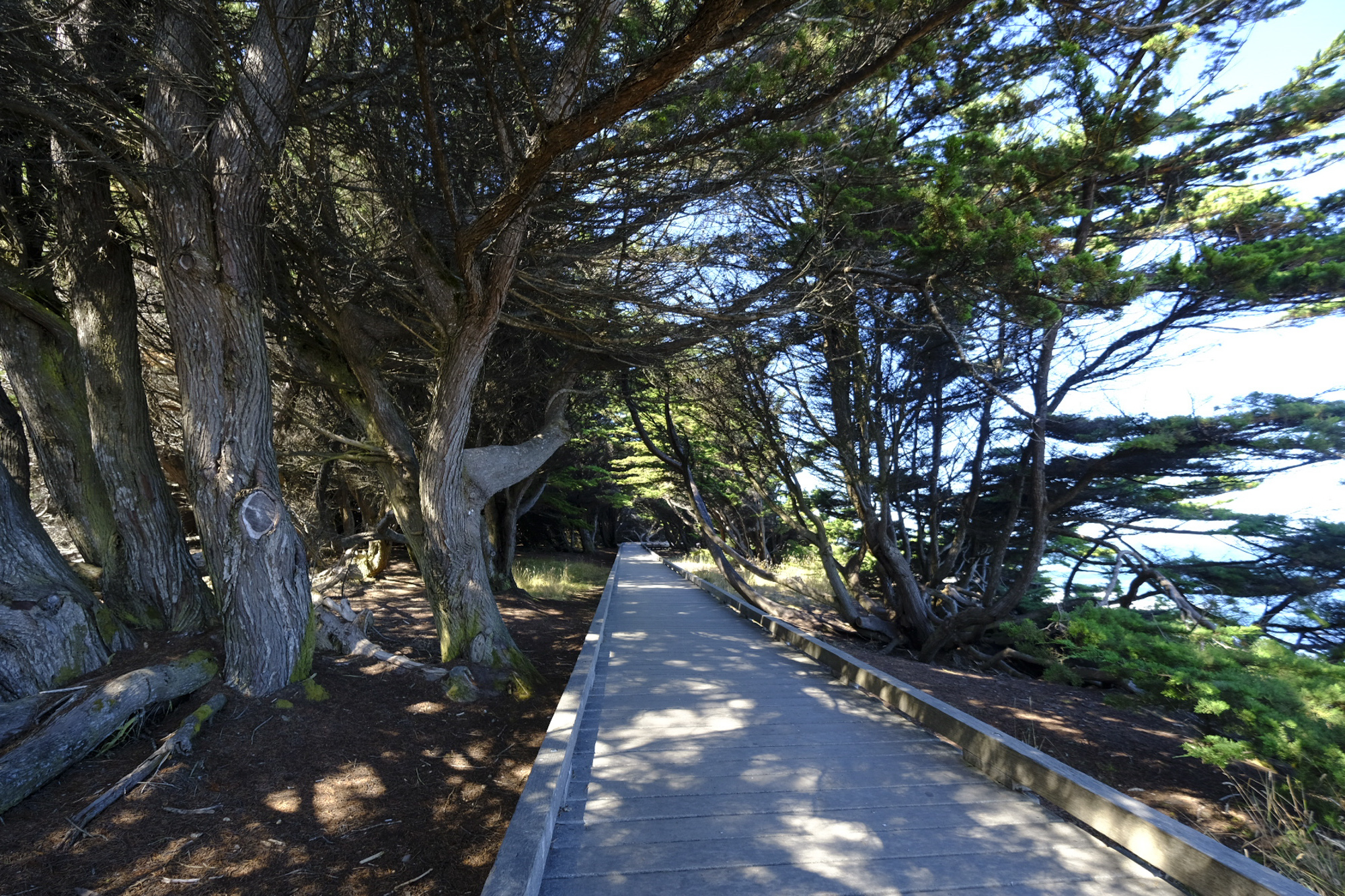
In this image of a walkway at beautiful MacKerricher State Park, just a short drive north of Ft. Bragg, you can see the distortion on the edges of the frame. This can easily be cropped out or adjusted some in the distortion tool in LR, but I like it! 1/125, f/4, ISO 250, 10mm.
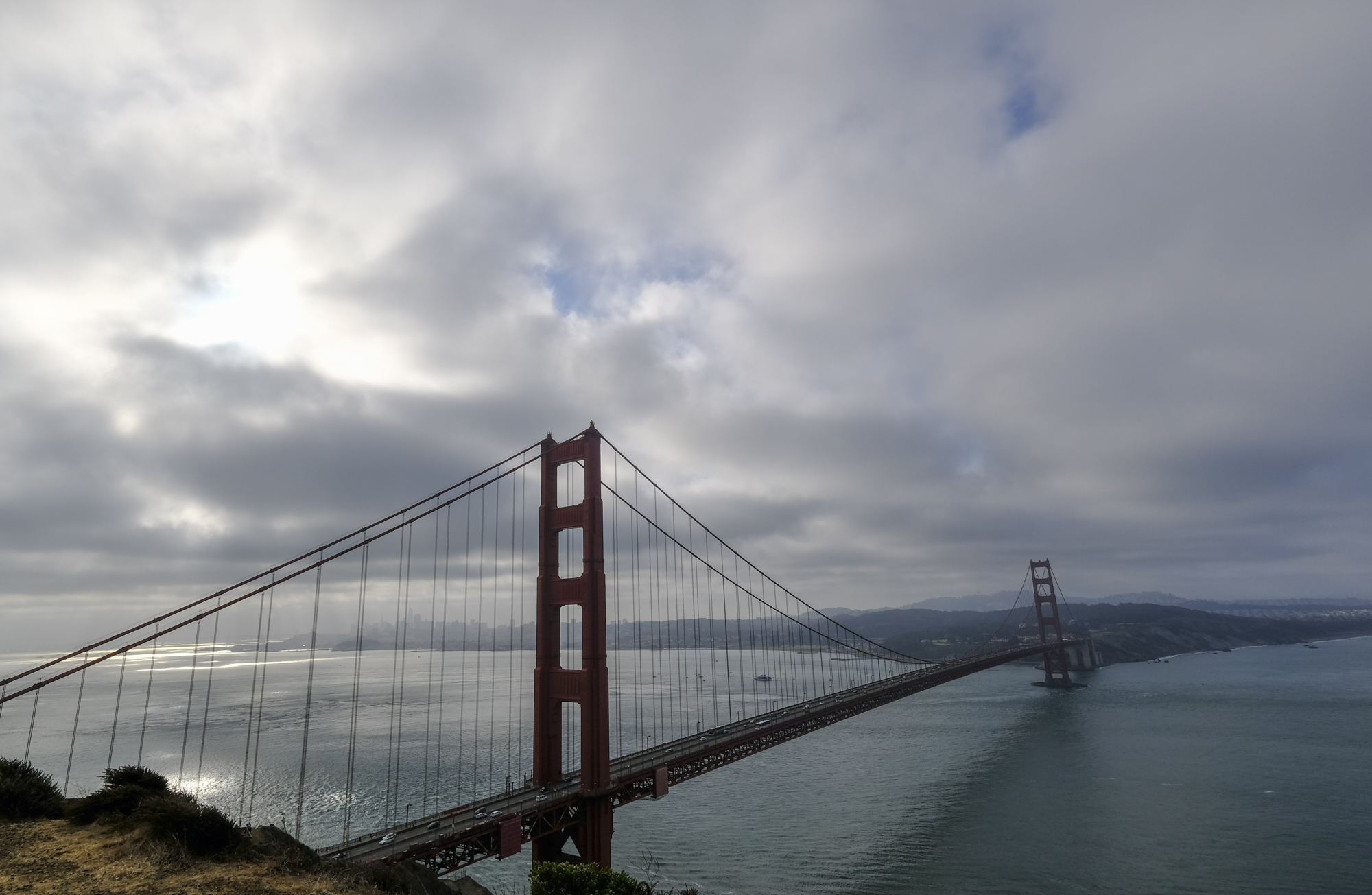
On the way home I stopped at an overlook I hadn’t been to before. This moody shot was taken at 8:52 a.m. on a Sunday (a lot less traffic!). Notice how the bridge support in the background of the photo appears bent. I corrected it a little using the Sigma 12-24 setting. If I really wanted a straight bridge support I wold have a used different lens or focal length. If you are able to look very close at the vehicles on the bridge you can read their license plate numbers. Kidding, but the detail is great! Taken at 10mm, 1/500, f/11, ISO 200. Why 1/500th? I don’t know.
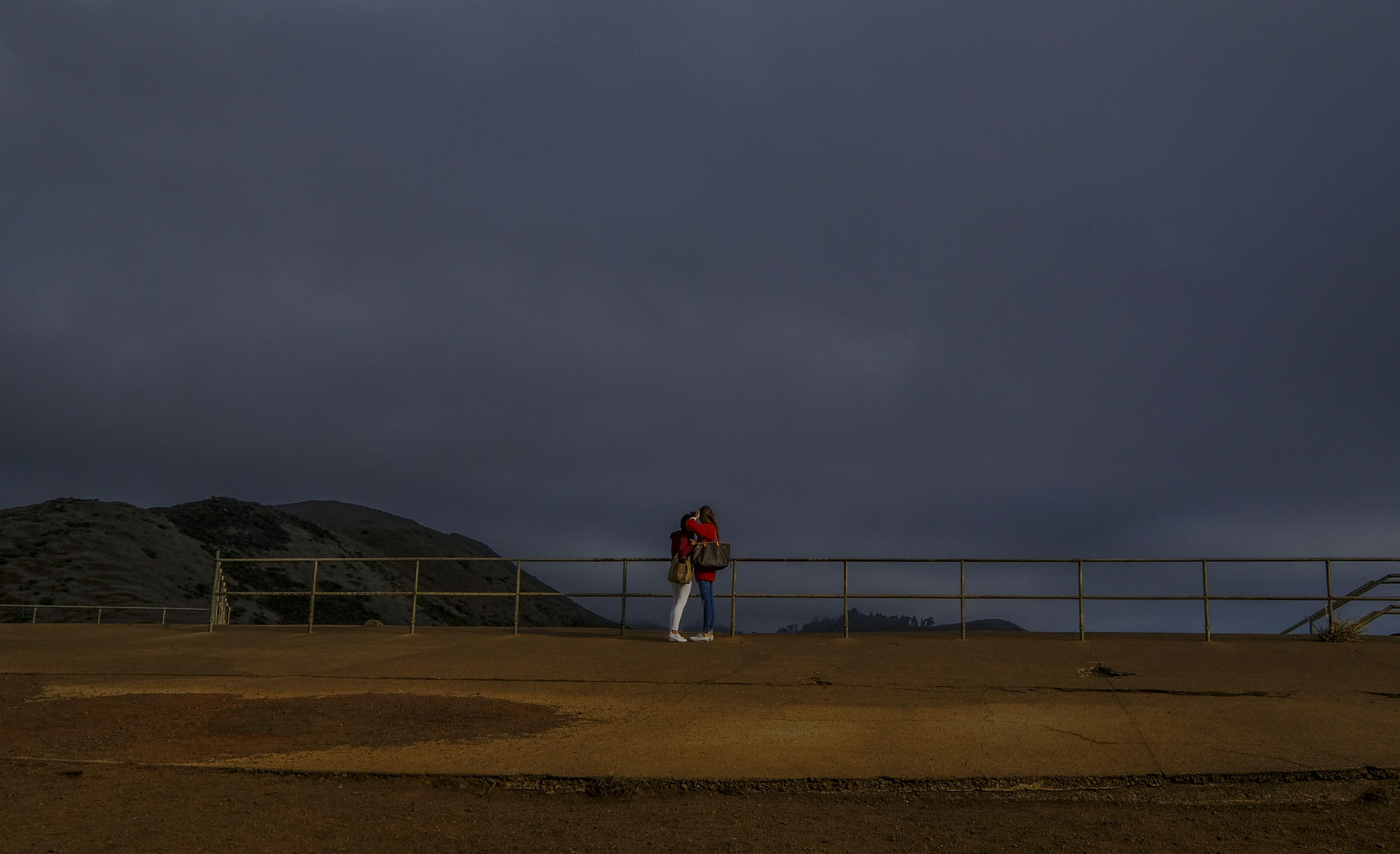
Like all photojournalists, I’m constantly turning my head 360 degrees to see “what else is out there.” I turned from the Golden Gate Bridge to see two young women taking a selfie with the bridge (and me) in the background. I liked the way the color popped out against a dark grey sky. 1/500, f/14, ISO 200, 24mm.












